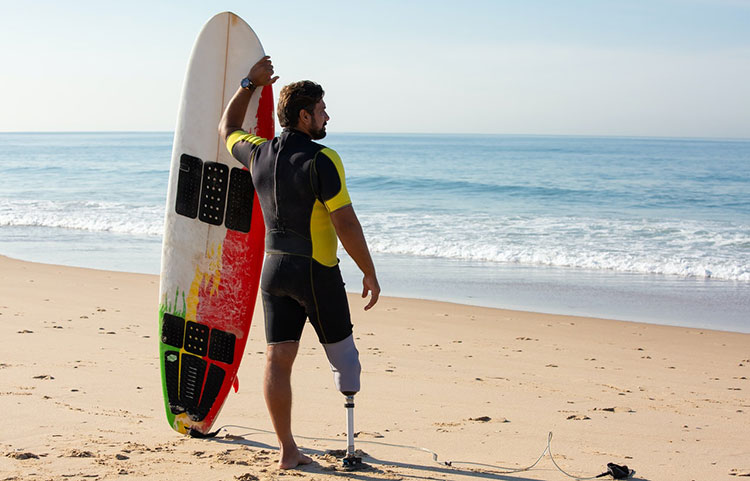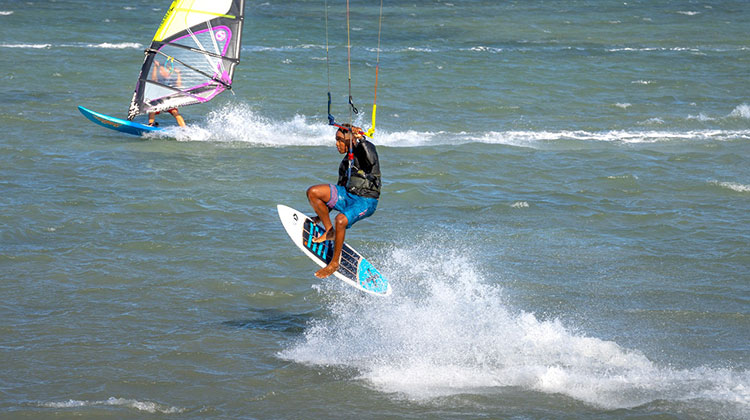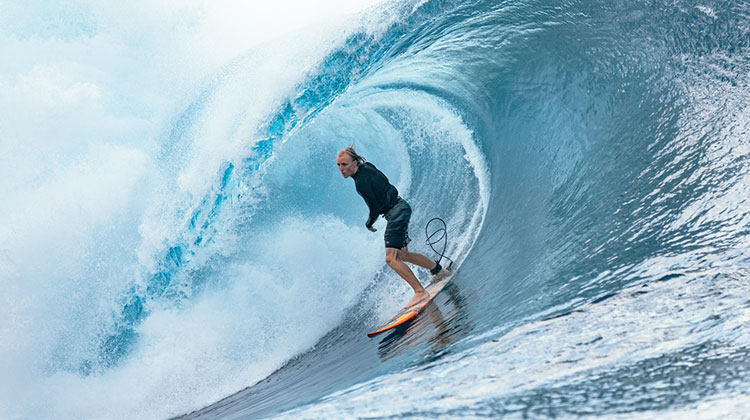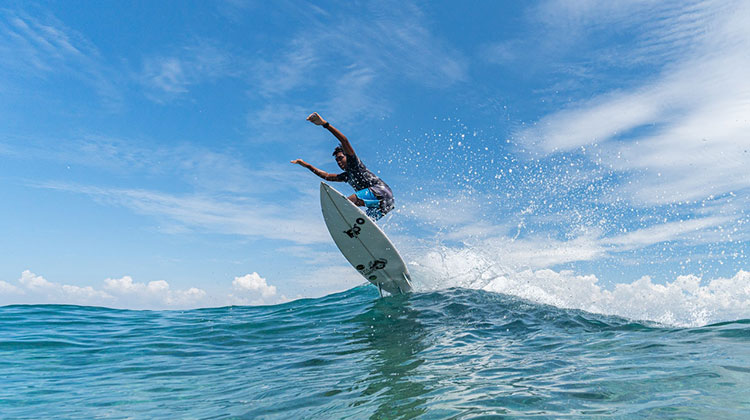Now that you know how to surf, it’s time to let yourself go over the high waves and stop falling over your boards each time you hit a wave. You will also love to learn the techniques that you always see your favorite pro surfer do.
To help you improve your skills, here are eight ways to make your work easier and more fun.
1. Get the Right Equipment
Do not keep using the same surfing board every time. Keep trying new surfing boards until you find the one that suits you best. If you are a learner, when you learn how to control the board and turn well, it’s time to change it for a more sophisticated one. You can opt for a classic longboard or a high-performance shortboard.
Surfboards are available for a variety of conditions. They come in different shapes, rockers, fins, fin systems, and sizes. Learn to choose the correct surfboard for the surfing level you are in and your abilities. Go for one that catches the waves easily without straining. Additionally, it should not sink easily when the waves slow down.
Therefore, you need to carry a variety of boards on your surf and paddle board rack mounts every time you plan to go surfing.
2. Learn the Right Ways to Paddle
Always assess the waves before you set out paddling. Get the details of the specific place where you will be surfing.
It is not easy to paddle through a wave, so you have to learn the proper methods to catch the waves without struggling. Also, when you know how to swim right, it will be easy to get back out.
To generate more power as you paddle, reach as far forward as possible with each stroke. Keep rotating your shoulders as you make the strokes. It will make your forward movement easy. It would help if you also kept your fingers almost closed, not closed, to provide a significant lift that propels you forward more effectively. You should keep your elbows high and use powerful strokes to go deep into the water.
3. Work on Your Flexibility
Avoid standing tall in the water because of stiff legs, hips, or back. Bend your knees and keep the upper body straight as it makes you more flexible, gives you balance, and enables you to absorb shock easily. Also, you will be able to move through the waves easily and overcome them.
When you are flexible, you can perform different moves efficiently as you surf. Concentrate on squatting and centering your weight on your feet to strengthen your body. This posture gives your body more power and control. When turning, keep in mind the following order, head first, then upper body, hips, and last legs.
4. Fitness and Warm-Up
To surf well, you need a healthy and fit body. Although achieving this takes time, keep working on it if you want to be a better surfer. Therefore, you need to exercise regularly. Focus on exercises that help you improve your flexibility, speed, and power. Avoid exercise that builds muscles, giving you a stiff body that is not good for surfing.
Warming up before you enter the water is a crucial process that you shouldn’t ignore. It helps prep your muscles for the actual surfing and enables you to avoid injury. Take about five to ten minutes doing exercises such as squatting, jumping, skipping, twisting, and push-ups.
5. Go with the Rhythm
Avoid getting too excited when you surf until you forget to relax and build your progress slowly. Create the right rhythm to help you find an excellent place to surf. Breathe in and out slowly as you paddle to release the tension in your body.
Start slow while keeping a convenient flow, then increase your attacks as you progress. Go with the waves and let them teach you a few tricks while you are at it. You may fall a few times, but you will finally get there.
You should also set your own pace. As you move your arms ahead, compress and decompress up and down the face of the wave.
6. Stance
If you want to have fun while surfing, you have to maintain your position at the far back of the board near its tail. It is the area that is most loose and fast. Once you find the spot on your board, adjust your front foot so that it takes a little more extra weight than your back leg. Never make the mistake of putting too much weight on the back leg.
You may move your legs from time to time, but remember always to use your head to steer your body.
Stay low throughout the whole wave. Maintaining the position is not as easy as it seems. It requires discipline and strength. The position helps you be more stable and gives your body power. Also, it enables the body to coordinate well. Keep your arms low and close to your sides for balance.
7. Have a Positive Approach
Avoid going deep into the bottom of the wave as it might cause you to lose speed fast and trip over the waves. Take off at an angle parallel to the beach and maintain your position at the top two-thirds of the wave.
Stay as high as possible on the wave to get the best place to turn to make excellent turns. Then, descend to a short distance below the middle, then make the bottom hinge.
8. Keep Practicing
Constantly practicing will help you improve your skill, master some complicated techniques, and maintain a good body posture.
As you become more versed with surfacing, start practicing how to use rails. They will help you move and do a lot of tricks. Also, they help you increase your speed and do bottom turns.
Being a pro in surfing requires a lot of patience, hard work, and time, as it is not easy.
Conclusion
As you improve your surfing skills, remember that the most important thing is to have fun. You will get much better at it when you are enjoying the activity.
Also, get a friend who is better at surfing than you. They will motivate you to push yourself harder, bringing out your best abilities.
related post






Leave a Reply